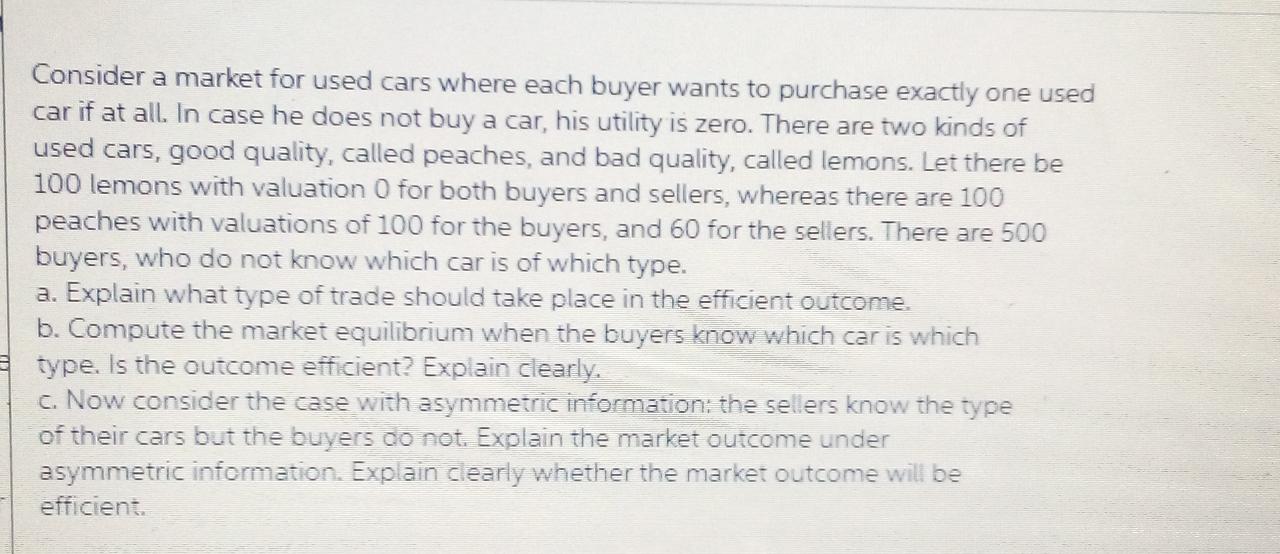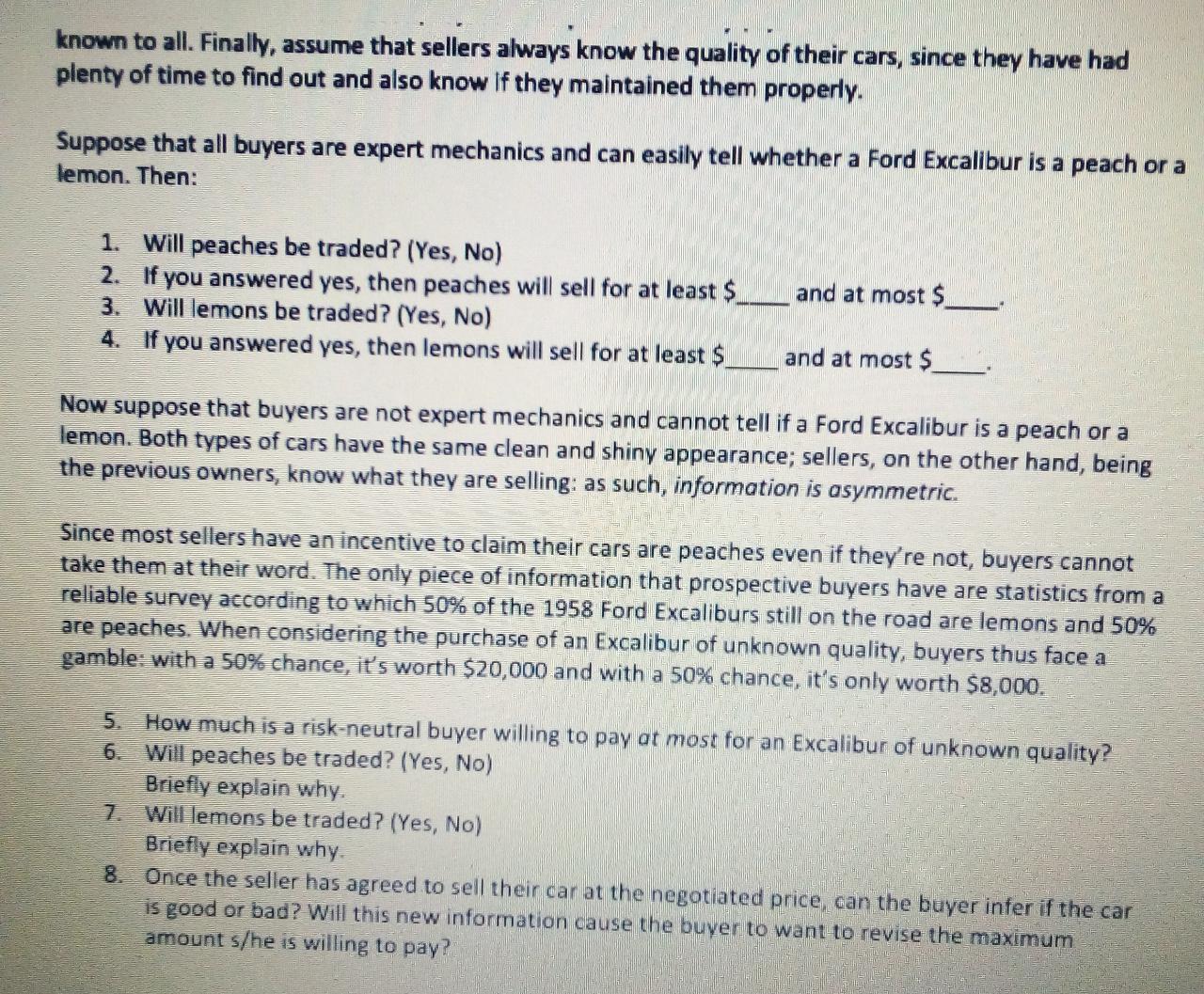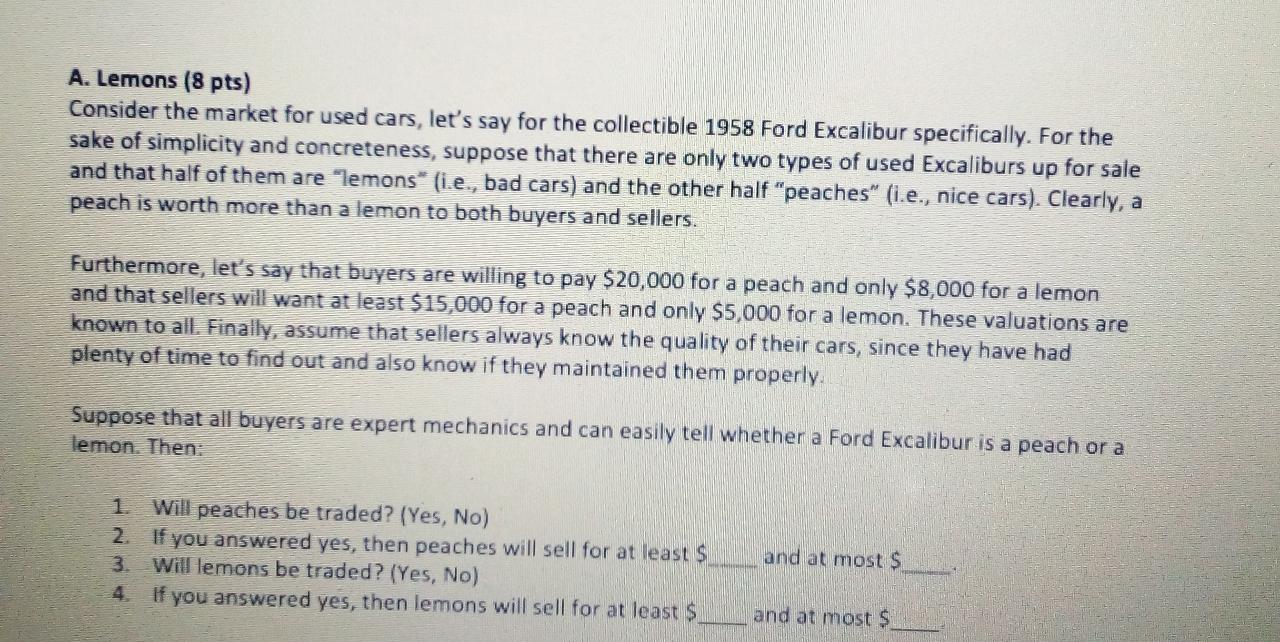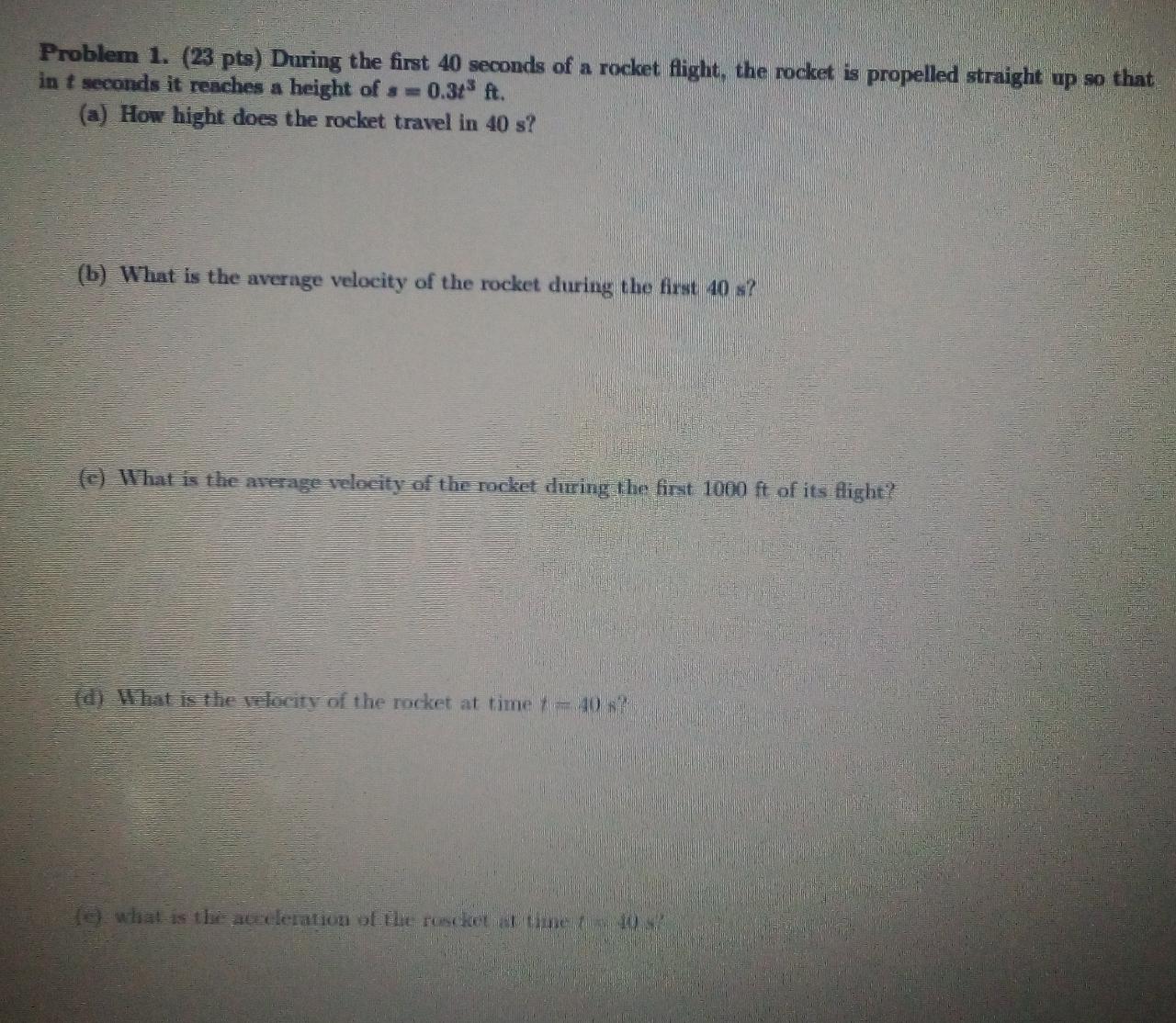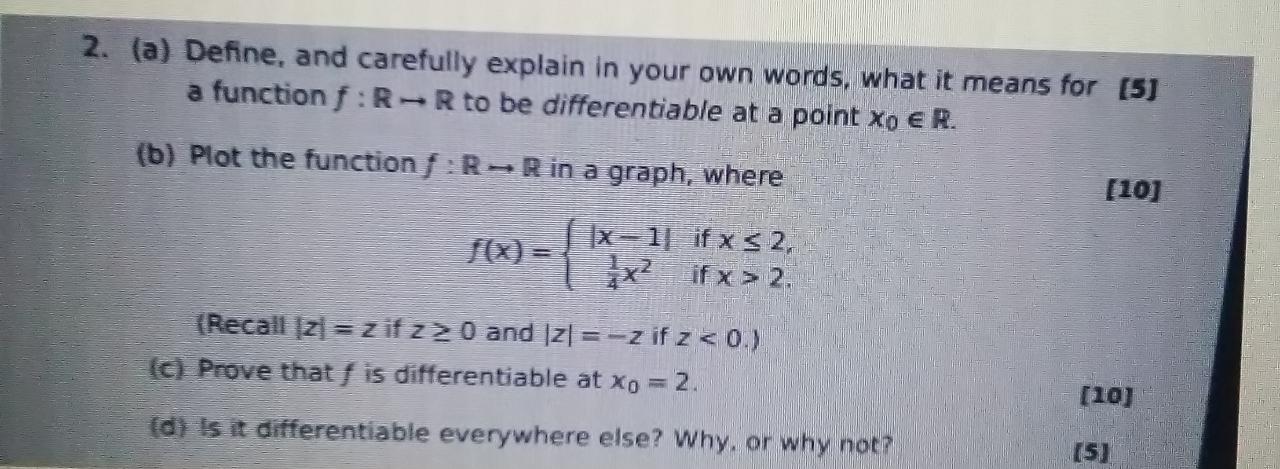Hi. Kindly solve every question
Consider a market for used cars where each buyer wants to purchase exactly one used car if at all. In case he does not buy a car, his utility is zero. There are two kinds of used cars, good quality, called peaches, and bad quality, called lemons. Let there be 100 lemons with valuation 0 for both buyers and sellers, whereas there are 100 peaches with valuations of 100 for the buyers, and 60 for the sellers. There are 500 buyers, who do not know which car is of which type. a. Explain what type of trade should take place in the efficient outcome. b. Compute the market equilibrium when the buyers know which car is which type. Is the outcome efficient? Explain clearly. c. Now consider the case with asymmetric information; the sellers know the type of their cars but the buyers do not. Explain the market outcome under asymmetric information. Explain clearly whether the market outcome will be efficient.known to all. Finally, assume that sellers always know the quality of their cars, since they have had plenty of time to find out and also know If they maintained them properly. Suppose that all buyers are expert mechanics and can easily tell whether a Ford Excalibur is a peach or a lemon. Then: 1. Will peaches be traded? (Yes, No) 2. If you answered yes, then peaches will sell for at least $_and at most $ 3. Will lemons be traded? (Yes, No) 4. If you answered yes, then lemons will sell for at least $_and at most $ Now suppose that buyers are not expert mechanics and cannot tell if a Ford Excalibur is a peach or a lemon. Both types of cars have the same clean and shiny appearance; sellers, on the other hand, being the previous owners, know what they are selling: as such, information is asymmetric. Since most sellers have an incentive to claim their cars are peaches even if they're not, buyers cannot take them at their word. The only piece of information that prospective buyers have are statistics from a reliable survey according to which 50% of the 1958 Ford Excaliburs still on the road are lemons and 50% are peaches. When considering the purchase of an Excalibur of unknown quality, buyers thus face a gamble: with a 50% chance, it's worth $20,000 and with a 50% chance, it's only worth $8,000. 5. How much is a risk-neutral buyer willing to pay at most for an Excalibur of unknown quality? 6. Will peaches be traded? (Yes, No) Briefly explain why. 7. Will lemons be traded? (Yes, No) Briefly explain why. 8. Once the seller has agreed to sell their car at the negotiated price, can the buyer infer if the car is good or bad? Will this new information cause the buver to want to revise the maximum amount s/he is willing to pay?A. Lemons (8 pts) Consider the market for used cars, let's say for the collectible 1958 Ford Excalibur specifically. For the sake of simplicity and concreteness, suppose that there are only two types of used Excaliburs up for sale and that half of them are "lemons" (i.e., bad cars) and the other half "peaches" (i.e., nice cars). Clearly, a peach is worth more than a lemon to both buyers and sellers. Furthermore, let's say that buyers are willing to pay $20,000 for a peach and only $8,000 for a lemon and that sellers will want at least $15,000 for a peach and only $5,000 for a lemon. These valuations are known to all. Finally, assume that sellers always know the quality of their cars, since they have had plenty of time to find out and also know if they maintained them properly Suppose that all buyers are expert mechanics and can easily tell whether a Ford Excalibur is a peach or a lemon. Then: 1. Will peaches be traded? (Yes, No) 2. If you answered yes, then peaches will sell for at least $ and at most S 3. Will lemons be traded? (Yes, No) 4. If you answered yes, then lemons will sell for at least $ and at most sProblem 1. (23 pts) During the first 40 seconds of a rocket flight, the rocket is propelled straight up so that in t seconds it reaches a height of s = 0.343 ft. (a) How hight does the rocket travel in 40 s? (b) What is the average velocity of the rocket during the first () What is the average velocity of the rocket during the first 1000 ft of its flight? What is the velocity of the rocket at times I what is the au leration of the roscke2. (a) Define, and carefully explain in your own words, what it means for [5] a function f : R - R to be differentiable at a point Xo e H. (b) Plot the function f : R - R in a graph, where [10] (x 1| ifxs 2 x2 if x > 2. (Recall |z) = z if z 2 0 and |z| = -z if z
